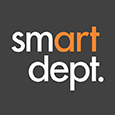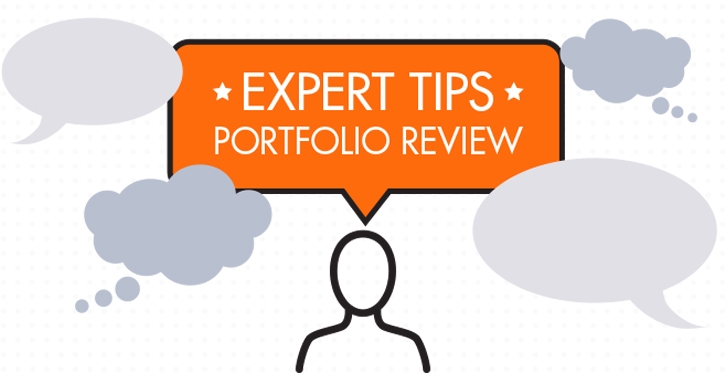When applying to a design role, one of the first things a hiring manager will look at is your portfolio. The creative consultants at smartdept. inc. review 100’s of portfolios each month and want to share their top tips on how to make sure yours stands out from the crowd.
Unsurprisingly, the one thing that everyone on staff wanted to talk about was organization. Whether you’re organizing by campaign, client, or type of medium, it should be very easy to navigate through and get to the right place.
See the rest of our expert tips below:
Hannah Staal, Creative Consultant in Grand Rapids
- The most effective portfolio will tell your story, celebrate your brand. It will showcase your growth and development.
- Flushed out campaigns: Does your messaging hold true for several different pieces? i.e. signage, logo, branding, sales sheets
- Are you specialized? i.e. packaging, agency driven…or more generalized? Embrace it!
- Concept to Execution: did you show process? That’s always a cool perk.
Jaime Sklar, Creative Consultant in Chicago
- Functionality: Content and samples should flow naturally and easily. User experience is huge when looking at design portfolios especially. Nobody likes to waste time trying to click through different samples and images that are choppy and inconsistent
- Layout and Design Aesthetic: If the color and design aesthetic is too bulky, showy, or flashy, it takes away from the work. Black backgrounds look outdated. The text should be easy to read on each page/sample.
- Portfolio Site Used: Use a modern portfolio site and check it regularly. Coding changes and updates can pop up without warning.
- Variety: I prefer portfolios that include several samples from each project, along with descriptions of that project and the work you contributed.
Colleen Walton, Creative Consultant in Seattle
- Keep it simple! The background should be neutral and the navigation should be intuitive. Your site shouldn’t distract from your work.
- Descriptions are key. They don’t have to be long, but one or two sentences about what the project is and how you were involved is very helpful.
- Make it easy for people to contact you. Include your email or add a contact page. People can’t hire you if they don’t know how to reach you.
Nina Strolia, Creative Consultant in Chicago
- Share some information about each sample to give the viewer context. What did you contribute to this piece? Was this an existing file that you updated or did you concept it?
- Delete that distracting background. The highlight of the site is your work, not some crazy animated background. A simple, white background is always a winner.
Colin Wodarski, Business Development Manager
- You should express your personality without it distracting from the main focus – your work!
- Samples should include a pertinent description in an easy to find, quick, digestible format: where did you do the project; who was the client; if it was done as a team, what was your role; tools/software used; challenge & outcome (i.e. these direct mailers helped increase web traffic by 50%)
Amy Porter, Sr. Creative Consultant in Chicago
- Hiring managers like to see a copy of or link to your resume on your portfolio. Put everything in one place. That goes a lot farther than the cutesy “about me” page.
- Tread carefully with sensitive materials. Did you sign an NDA when you designed that nifty piece of internal software? Even if your portfolio is behind a password wall, your future employer may worry if you’re showing samples from legally protected work. Be sure you have permission before putting your work out there.
- Building a responsive site portfolio site Square Space, Wix or WordPress using snappy template. Or if you’re targeting Web Design and UX roles, build the site yourself to push it the extra mile. Be sure to test it on multiple browsers, your tablet and mobile phone.
Eric Pairitz, smartdept. inc. Principal
- When I am reviewing a portfolio I look for a clean and organized presentation.
- Often the way a candidate presents their work in an interview setting can be a hint as to how they organize their work day.
- Show up to an in person interview at the scheduled time. Late is never good, but too early can also be a deterrent for many hiring managers.
Michelle Pairitz, smartdept. inc. Principal
- Present your work in chronological order. Most recent work should be first and student work you are proud of should be last.
- If your portfolio lacks depth, it is perfectly acceptable to include well-executed spec work.
- Be honest with yourself and your recruiter about what your role was on each portfolio piece. Elaborate on working with a team, the software used, and if any special circumstances were involved.

